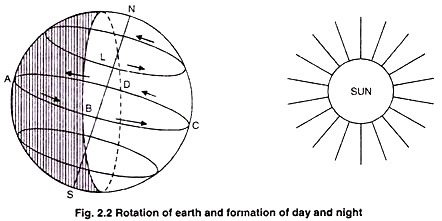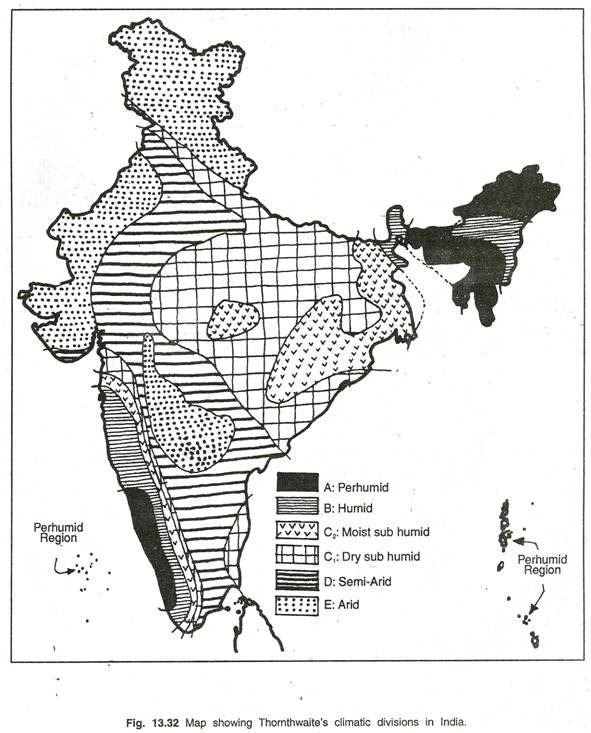ADVERTISEMENTS:
A glacier is a moving mass of ice at speeds averaging between 30 to 40 cm and 15 to 18 metres per day. It originates at high altitudes due to low temperatures and high orographic precipitation.
Glaciers are of four types, viz. continental glaciers, ice caps, piedmont glaciers and valley glaciers. The continental glaciers are found in the Antarctica and in Greenland. The biggest continental ice sheet in Iceland, for example, has an area of 8,450 square kilometres, and the thickness of its ice is 1,000 metres. Ice caps are the covers of snow and ice on mountains from which the valley or mountain glaciers originate. The piedmont glaciers form a continuous ice sheet at the base of mountains as in southern Alaska.
ADVERTISEMENTS:
The valley glaciers, also known as Alpine glaciers, are found in higher regions of the Himalayas in our country and all such high mountain ranges of the world. While the continental ice masses covering thousands of square kilometres and thousands of metres thick move outward in all directions from their central portions, the valley glaciers move down the mountain slope towards lower regions.
There is a great variation in their size. The largest of Indian glaciers occur in the Karakoram Range, viz. Siachen (72 km), while Gangotri in Uttar Pradesh (Himalayas) is 25.5 km long and many others are as small as 5-10 km in different parts of the range.
The conditions favouring the formation of snow fields above the snowline are:
(i) the gentle slopes from where they cannot easily be swept off by wind or break off the slope as an avalanche, and (ii) the hollows or localities sheltered from direct sun.
A glacier is charged with rock debris which range from highly pulverised rock flour to huge angular boulders of fresh rock, obtained by freeze- thaw and plucking and which are used for erosional activity by moving ice. A glacier during its lifetime creates various landforms which may be classified into erosional and depositional landforms.
Erosional Landforms:
1. Cirque/Corrie:
Is an amphitheatre-shaped hollow basin cut into a mountain ridge. It has steep sided slope on three sides, an open end on one side and a flat bottom. When the ice melts, the cirque may develop into a tarn lake. (Fig. 1.61)
2. Glacial Trough:
Is an original stream-cut valley, further modified by glacial action? Step- formation takes place at maturity; otherwise it is an ungraded and irregular feature. (Fig. 1.62)
3. ‘U’ Shaped Valley:
ADVERTISEMENTS:
Is another typically glacial feature. Since glacial mass is heavy and slow moving, erosional activity is uniform—horizontally as well as vertically. A steep sided and flat bottomed valley results, which has a ‘U’ shaped profile.
4. Hanging Valley:
Is formed when smaller tributaries are unable to cut as deeply as bigger ones and remain ‘hanging’ at higher levels than the main valley as discordant tributaries. This may happen due to glacial tilting or faulting.
5. Arete:
Is a steep-sided, sharp-tipped summit with the glacial activity cutting into it from two sides. (Fig. 1.62)
6. Horn is a ridge that acquires a ‘horn’ shape when the piedmont glacier surrounds a summit. (Fig. 1.62)
7. Fjord is formed as a steep-sided narrow entrance-like feature at the coast where the stream meets the coast. Fjords are common in Norway, Greenland and New Zealand. (Fig. 1.62)
8. Mammillated Field:
Is a term used for an ice-eroded field.
Depositional Landforms:
1. Outwash Plain:
When the glacier reaches its lowest point and melts, it leaves behind a stratified deposition material, consisting of rock debris, clay, sand, gravel etc. This layered surface is called till plain or an outwash plain and a downward extension of the deposited clay material is called valley train. (Fig. 1.63)
2. Esker:
is a winding ridge of unassorted depositions of rock, gravel, clay etc. running along a glacier in a till plain. The eskers resemble the features of an embankment and are often used for making roads. If the melting of glacier has been punctuated, it is reflected in a local widening of the esker and here it is called a beaded esker. (Fig. 1.63).
3. Kame:
ADVERTISEMENTS:
Terraces are the broken ridges or unassorted depositions looking like hummocks in a till plain. (Fig. 1.63)
4. Drumlin:
Is an inverted boat-shaped deposition in a till plain caused by deposition. The erosional counterpart is called a roche moutonne. (Fig. 1.63)
5. Kettle Holes:
Can be formed when the deposited material in a till plain gets depressed locally and forms a basin. (Fig. 1.63)
6. Moraine:
Is a general term applied to rock fragments, gravel, sand, etc, carried by a glacier. Depending on its position, the moraine can be ground, lateral, medial or terminal moraine. The material dropped at the end of a valley glacier in the form of a ridge is called the terminal moraine. Each time a glacier retreats, a fresh terminal moraine is left at a short distance behind the first one.
The material deposited at either of its sides is known as lateral moraine. When two glaciers join, their lateral moraines also join near their confluence and are called medial moraines. Many
Alpine pastures in the Himalayas like the Margs of Kashmir occupy the sites of morainic deposits of old river valleys. The excessive load that cannot be carried forward by a glacier is deposited on its own bed or at the base and appears as what is known as ground moraine. (Fig. 1.64)
Glacial Cycle of Erosion:
Youth:
The stage is marked by the inward cutting activity of ice in a cirque. Aretes and horns are emerging. The hanging valleys are not prominent at this stage.
Maturity:
The valley glacier gets transformed into trunk glacier and hanging valleys start emerging. The opposite cirques come closer and the glacial trough acquires a stepped profile which is regular and graded.
Old Age:
Emergence of a ‘U’-shaped valley marks the beginning of old age. An outwash plain with features such as eskers, kame terraces, drumlins, kettle holes etc. is a prominent development. The opposite cirques coalesce and the summit heights are greatly reduced. Mountain tops become rounded.





